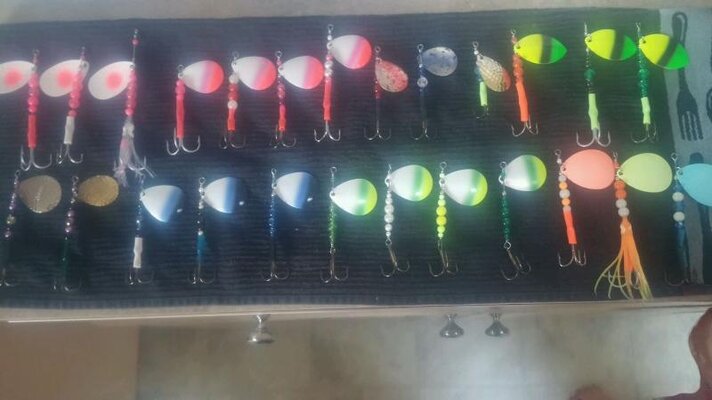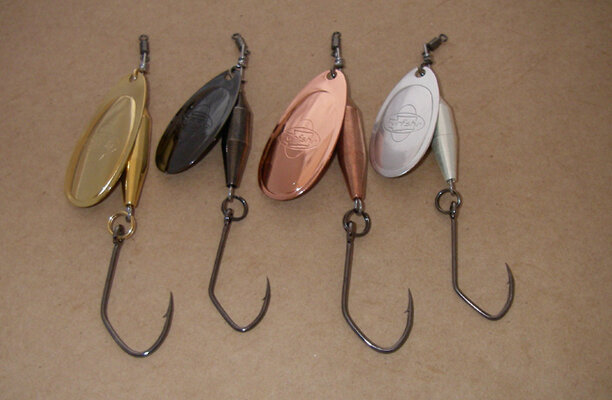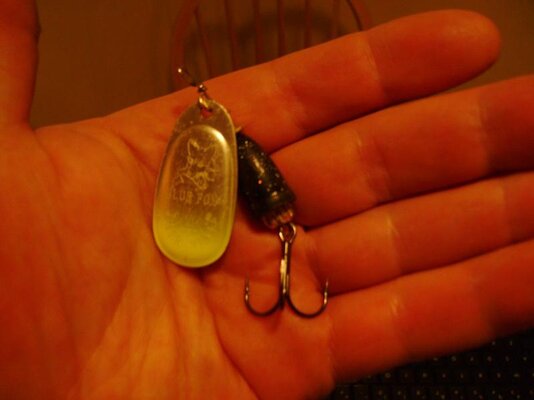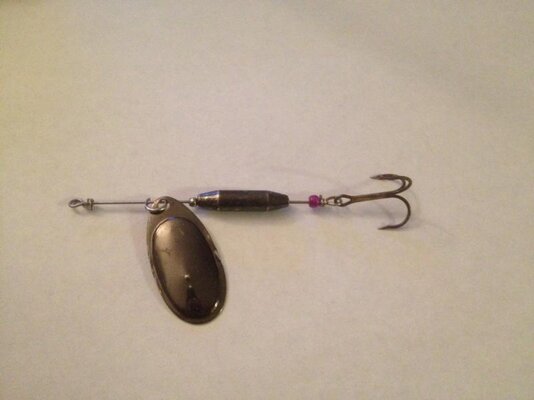troutmasta said:
I can see my self with the copper one. Nice job.:thumb:
Those are commercial offerings by RVRFSR....I posted the pic to show a weighted casting spinner.
Swinging brass is my main weapon in summer and I like to help beginning spinner makers up the learning curve.
Sorry, OP if I came off as critical but my gang has been twisting and swinging brass since the mid 80's...it's hard not to notice what works.
A few more nuggets...
Most of us are into the single hook thing....with the Mustad hook mentioned above the hookups are great and they are much less snaggy as compared to trebles.
The
split ring hook connection is for more range of motion at this connection....not so much for changing hooks. Without the split ring you will sometimes get binding where the hook doesn't swing freely. This is more of a problem with single hooks that have small eyes.
When discussing trolling or anchor fishing spinners some prefer to hold the hook straight with hook tubing or shrink tubing but that is a different class of spinner and a different form of spinner fishing.
I can't emphasize enough the importance of eliminating the traditional lead dropper when swinging weighted spinners for steelhead.
You want a direct connection for casting performance, reading spinner feedback and ultimately manipulating (controlling) the spinner.
A lead dropper interferes with all of the above.
This is money.....
spinner blade RPM and learning to control it.
This applies to trolling as well as casting spinners....same goes for wobblers and spoons only it's cyclic rate not RPM with these.
There is a certain blade RPM that has an optimum effect on fish....sure, they will bite a spinner spinning wildly and out of control, but once your brain keys in on that
thump-thump-thump you're in the money.
To maintain fishing depth during the swing, you have to be able to
pay out line, pick up line or hold as the current runs your spinner.
Each change has to be done in a fraction of a second as you read spinner RPM on your rod tip. River current during the swing dictates what needs to happen.
The only way that I have found to do this efficiently is with a direct-drive reel.
If you fish locked up with no line pay out, your spinner will over rotate and start rising just as you enter the sweet spot of the swing.
You can still catch a few doing this, as summer steelhead will chase, but you will catch many more if you learn depth and RPM control.





